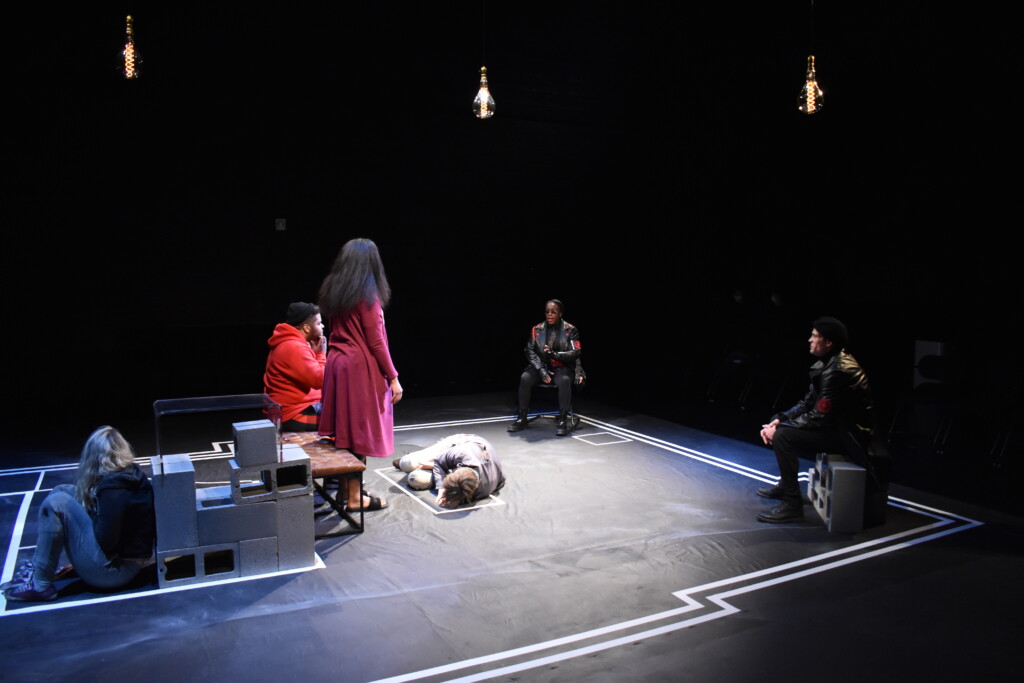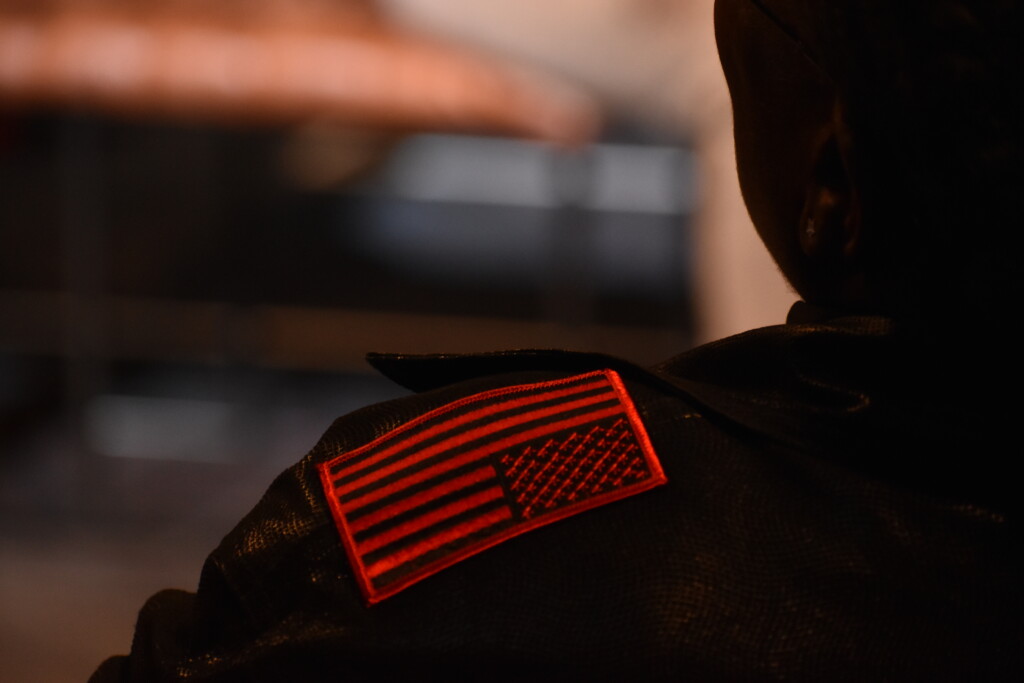This is the psychological balm of racial caste in America: If you’re Black and couldn’t overcome every obstacle to pull yourself up, it’s because you’re lazy and did not want to work hard. If you’re Black and you manage to be successful, it’s because of affirmative action and you didn’t earn it. Your failures and your successes are all blamed on the same thing: Your Blackness. The house wins either way. That’s why we have to stop allowing others to validate us. I started working at age 11 with a paper route. Started detasseling corn the summer of my 13th year. Started working two jobs in college and worked two jobs until I was 30 years old. Worked my way up from a tiny bi-weekly newspaper to The New York Times. It took me 13 years to get here. People can disagree with my work, people can disagree with me. But the need to pretend Black success was given and not earned in a society where Black people are underrepresented in every measure of well-being, in every well-paying white collar job, speaks to racial caste. It speaks to a deep insecurity in a society that folks know is not fair but need to pretend otherwise to validate their own success. It speaks to a deep insecurity of what would ever happen if Black Americans and other marginalized groups ever had a shot at an equal playing field. — Nikole Hannah-Jones, Pulitzer Prize winning journalist and creator of The 1619 Project.
In the backdrop of Carleton Bluford’s The Clean-Up Project, which will receive its world premiere this week in a Plan-B Theatre production, a swift revolution has transformed the country. In the home of Jordan and Melvin, a Black couple, Jordan asks Cameron, the Black first lieutenant representing the victorious revolutionaries, why are they carrying out such extreme measures. Cameron responds, “Extreme? I don’t think so at all. For what they’ve done I feel we could do much much more and be perfectly justified in doing so. I personally look forward to it.” Jordan wonders if that justification has been pushed too far.
In its first in-person production since before the pandemic, Plan-B has set the stage for a play that shifts gears quickly from a seemingly innocuous beginning to a panic attack that will seem at times to audiences like a “runaway train,” as Bluford says in an interview with The Utah Review.
The play opens the company’s 2022 season In Person. In Color., which features premieres by three Utah BIPOC playwrights. The Clean-Up Project emerged from a journal entry — the most personal form of written expression we have — that Bluford wrote in the midst of the summer Black Lives Matter protests in 2020, following the murders of George Floyd and Breonna Taylor and many others who have been killed by police. With encouragement by Plan-B’s Jerry Rapier, Bluford penned the script, his second full-length play being produced by the company.
The production, directed by Rapier and with Bluford as assistant director, will have a 10-performance run, beginning Feb. 17, in the Studio Theatre of the Rose Wagner Center for Performing Arts. The production also will be available for on-demand streaming for five days, Feb. 23-27. Only a few tickets remain for the live performances, as the normal theater capacity has been reduced by half.

With its premiere in the midst of Black History Month, the play compels all of us to take off the rose-colored glasses, as Bluford suggests in his own search for epiphanies about the history of our country. Furthermore, it is critical to consider if we have exemplified the most effective form of empathy to overcome our own fears and insecurities to push for real changes that begin to address the need for truth and reconciliation.
As stark and brutal as the play will appear to some audience members, in particular an ending that is as striking in its brilliance as it is intellectually challenging, Bluford nevertheless subtly cuts a path for clarifying what hope could look like in tangible terms. Some audience members may be tempted to approach the play from a defensive posture. But, it also is worth remembering that it is a metaphorical narrative which still springs from an extensive, comprehensive reading and engagement with historical facts and realities.
As the script suggests, the nervousness is palpable from the first moments of the narrative. Insulated in their homes, Melvin and Jordan are preparing to watch a professional football game on television, with snacks included. The wail of police sirens passing by ratchets up their anxiety, especially for Jordan. A televised football game might signal business as usual but the couple also has deliberately focused on sheltering themselves from what is happening outside their home. When Ryan and Taylor, a white couple who are their friends, arrive, seeking refuge, Melvin and Jordan no longer can ignore what is happening. When Cameron and his colleague Chris arrive, Melvin and Jordan realize that their friends are being hunted down for arrest and they likely too will face dire consequences should they resist.

The Clean-Up Project is framed as a jolt to our conscience and to test our capacity to overcome our fears and insecurities and deal directly with our history. In the nearly two years since American streets have seen the largest protests since the antiwar gatherings during the Vietnam War, reform, reciprocity and reconciliation have yet to proceed, be seen or legislated on a tangible basis. There have been plenty of symbolic and performative gestures but the status quo also has been barely nudged, despite the change in who occupies the presidency.
At the same time, more people have become aware of the historical significance of Juneteenth, for example, as well as other events and people who had been intentionally erased from the annals of American history. But, such an awakening also has alarmed just as many other people, who openly worry that their own histories are being superseded by an enlightened perspective that might ironically erase their prevailing accounts.
While awareness might have been heightened and made ever more visible especially on social media, the most difficult acknowledgments of our history in its unsanitized, uncensored and unrevised form have yet to be made. Well-intentioned progressives have tried to find some solace by expressing that the persistence of racism in its ugliest, most pernicious forms is “not who we are as Americans” or that “this is not the America I know and love.” But, America’s history has always been violent and rough, a point that continues to make many Americans extremely uncomfortable. As the pandemic gradually recedes into the background, the possible range of excuses for delaying the political will and the corresponding action to deal with issues and problems that have been stuck in a frozen or dormant state has narrowed substantially and will continue to do so. Of the six characters in Bluford’s play, it is Jordan’s trajectory through this narrative that epitomizes the most important lessons arising from this dynamic.

Eight years ago, when Ta-Nehisi Coates laid out the case of reparations for the institution of slavery, he wrote, “And so we must imagine a new country. Reparations—by which I mean the full acceptance of our collective biography and its consequences—is the price we must pay to see ourselves squarely. The recovering alcoholic may well have to live with his illness for the rest of his life. But at least he is not living a drunken lie. Reparations beckons us to reject the intoxication of hubris and see America as it is—the work of fallible humans.”
This is precisely the point in the script Bluford has produced. The distinctions between protagonist and antagonist are blurred. At various points, each character vents their most personal thoughts and secrets, as harsh and as brutal as they might seem, in their own respective monologue. The metaphorical revolution in The Clean-Up Project points to the revolution we will need first in our individual conscience and then as a nation, to borrow a phrase from Coates. For the Melvins and Jordans (and the Camerons and the Chrises), taking the right epiphanies from the play leads to a gateway for beginning to ease and heal the trauma of historical memories embedded in their psyches. For the Ryans and Taylors, it is the opportunity to banish their guilt-ridden sentiments and to act without fear on behalf of truth and reconciliation.
Bluford’s play opens almost seven years to the day after his debut as playwright with Mama. That play signified several milestones for Plan-B and Bluford, who had appeared in several productions for the company before and after Mama. Receiving its opening in 2015, it is believed to have been the first premiere of a work by a Black playwright in Utah history. It was selected unanimously in a blind reading process involving 24 submissions from Utah-based playwrights 35 and younger in the inaugural competition for the David Ross Fetzer Foundation for Emerging Artists (The Davey Foundation).

In Mama, as mentioned in The Utah Review at the time, Bluford laid out an exquisitely touching and honest tapestry celebrating the deep connections which he shares with his mother, interwoven with stories of others that he curated from a request he put out originally in a Facebook post. Bluford pays a masterfully synthesized tribute to a mother’s presence in a unique voice and art that is a profound statement of remembrance and embodiment. He captures the gamut of emotion — affection, awkwardness, grief, disappointment, fierce commitment, contemplation and silence — in a script that epitomizes the courageous artist in the recent movement known as the Utah Enlightenment.
Today, at 37, Bluford has expanded greatly his capacities and capabilities as a courageous artist. His professional portfolio as an actor and writer has taken him to numerous paths, including Burbank, California. He is engaged to Sarah Walker (who is cast as Taylor in the play), with a wedding date set in August. From an interview with The Utah Review in 2015, Bluford said, “Well the shows that I have been in at Plan-B have been well-crafted, beautiful and smart pieces of theatre. They have given me something to strive for.” He added, “As a young playwright, I think it is important to be around great writers who are writing new plays and to have that opportunity on stage is a blessing. Now, has my writing gotten better because of this? Absolutely, especially in terms of learning what works in different spaces and for different audiences.”
One of those playwrights was the late Eric Samuelsen, whom Bluford named specifically as an important mentor and colleague. Reading through the script for The Clean-Up Project, one immediately recalls Samuelsen’s Nothing Personal, a 2013 production that made many Plan-B audiences uncomfortable, especially with its depiction and suggestions of torture and chained prisoners. Nevertheless, it was a surreal masterpiece, piercing through the ethical and moral concerns of torture and the preservation of civil liberties. “Samuelsen’s ability to make things personal is at its peak in this play,” Callie Oppedisano wrote in 2015 as part of a discussion of Smauelsen’s body of work as a playwright. “No longer are foreign prisoners of war in Guantanamo a news story; they are suddenly people standing before the audience in real flesh and blood.”

There is something similar set to occur when this new work premieres this week. In The Clean-Up Project, Bluford says that as the rehearsals have progressed, it has become more evident that the play is giving a “voice to the voiceless,” especially for those whose murders and injustices have not appeared as major news stories on the national media radar in terms of the visibility found with the Floyd or Taylor killings. Likewise, regarding the 400 years of history that gird the foundation of the play, Bluford says collectively of everyone involved in the production, “We have created an homage to those who have gone before and those who may come after.”
The cast of six includes two actors who appeared in Mama: Latoya Cameron and Dee-Dee Darby-Duffin. Others include Cal Beck. Chris Curlett, Matt Sincell and Sarah Walker. To accommodate the play’s heightened emotions and tensions as well as depictions of on-stage violence. Kimi Handa Brown worked with the cast as intimacy director.
Bluford’s vision for both form and staging of The Clean-Up Project reflects his experiences as an actor who has appeared numerous times in the same performing space that will be the staging site for his latest work. Bluford recalls what it was like before he moved away from Utah. “I was a different person, making sure that everyone else was taken care of before myself or that I didn’t want to be seen as the guy causing any problems.” Returning to the space of Utah, he admits that living here again has felt differently, not as empathetic as he had originally thought it to be.

He also has included specifics about staging the play, mindful as usual of Plan-B’s capabilities of leveraging the most from minimalism. He says the stage setting of the home belonging to Melvin and Jordan should be rendered in chalk, with everything laid out like the architectural drawings of the space. He recommends using few props, adding that “everything else is drawn in and sound cues and pantomime will account for the missing items.” The minimalism amplifies one of many thematic metaphors in the play relating to unsatisfied expectations for relief, reform and reconciliation. He adds that the image of a half-built house can either be seen as a place where some of the essential parts are invisible or that construction has stalled or that it once was a fully built house but now some parts of it have degraded, decayed and disintegrated.
True to the script’s intrinsic cinematic tone, Bluford is set to direct a filmed version of The Clean-Up Project with the original cast, which will be shot in Utah later this year and eventually will be submitted to film festivals.
The remainder of the production team comprises Emma Belnap (lighting), Cheryl Ann Cluff (sound), Janice Chan (set), Arika Schockmel (props), Derek Williamson (costumes), set/lighting support by Sydney Shoell, COVID-19 safety officer Kallie Filanda and stage manager Taylor Wallace.
Performances will run on Thursdays through Saturdays at 8 p.m. and additional performances on Saturdays at 4 p.m. and Sundays at 2 p.m. For more information about tickets, see the following Plan-B website links: to subscribe in person to all three premieres of the In Person, In. Color season, see here. To subscribe for streaming access to the season’s productions, see here. Single in-person tickets can be purchased here while single show streaming tickets can be purchased here. For all questions of accessibility, accommodation and COVID-19 safety policies along with what is required for in-person admission to performances, see here.



1 thought on “Plan-B Theatre set to open 2022 season In Person. In Color. with world premiere of Carleton Bluford’s The Clean-Up Project”